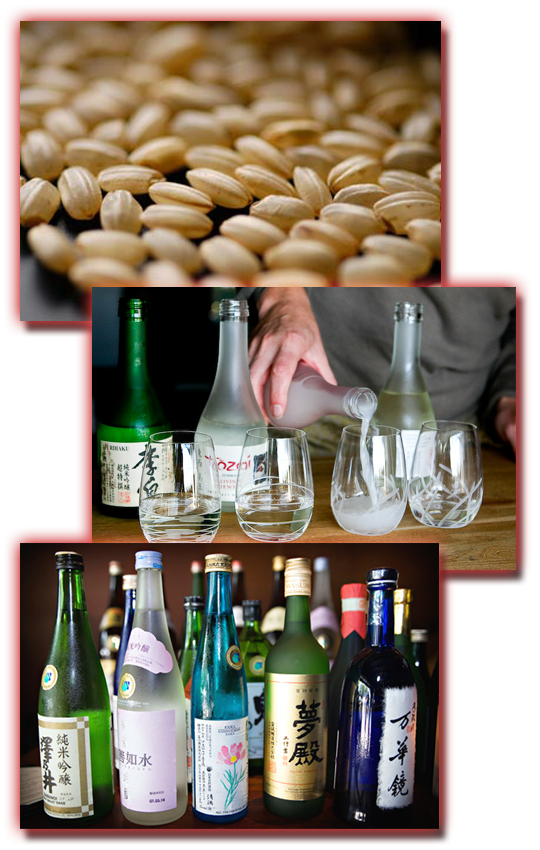
What is Sake?
Sake is so revered a part of Japanese life that it is correctly referred to as o-sake, with the honorific prefix used to show respect to one's superiors. Usually described as rice wine, it's really closer to a rice beer, a fermented, but not distilled, grain alcohol; however, it has a stronger kick than traditional beer, generally ranging from 22 to 30 proof. It contains no preservatives, and should be drunk fresh (although it will keep for several weeks in the refrigerator). Namazake, which is unpasteurized, should be drunk as soon as possible or the flavor will go flat.
Sake has been brewed in Japan for more than 2,000 years. Originally the rice was actually chewed to initiate the fermenting process; but in the 8th century, sake makers discovered that a rice mould called koji worked just as well, and it is still used today.
Originally, most sake makers worked for the court, but starting in the 13th century, guilds and private companies were formed, often working for individual shrines. (There is still a sake- makers temple in Kyoto). Gradually, small family breweries took over, and sake-making remained a hands-on business, like winemaking, until the 20th century.
During the worldwide Great Depression and during World War II, rice shortages nearly wiped out the industry. Brewers added small amounts of glucose and alcohol during the fermentation process to produce enough sake. A little alcohol is still added to many sakes. Junmaishu, pure sake made only with rice, water and koji accounts for about 5% of sakes brewed today.
The rougher sakes, called futsu sakes, were the kind shipped to the United States in the 1960's and 70's and are responsible for the habit of drinking sake warm. However, in the past 25 years, interest in better quality sakes has inspired a revival in jizakes - the small custom brews, also called country or local sakes, that are intended to be drunk cold or at room temperature
The process of brewing sake begins with washing, soaking and steaming the rice, using varieties particularly suited for fermentation rather than eating. It is mixed with the koji mold, stirred with huge paddles four times a day for two days, then allowed to ferment for about a month. The mash is about 20% alcohol at this point, when additional alcohol may be added. Finally, the sake is strained, filtered, and pasteurized before being aged.
Tako offers a variety of styles of sake, defined by the manner in which the sake rice is polished; the more starch polished off the grain, the purer the flavor and higher the quality.
We hope you enjoy tasting these fine beverages!
